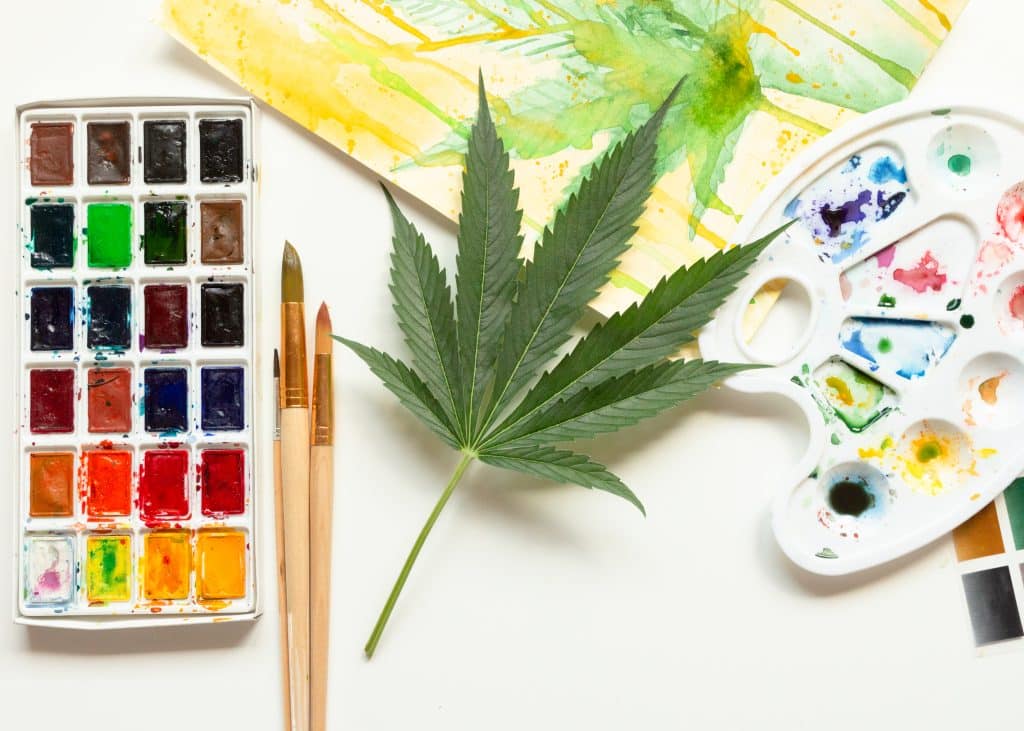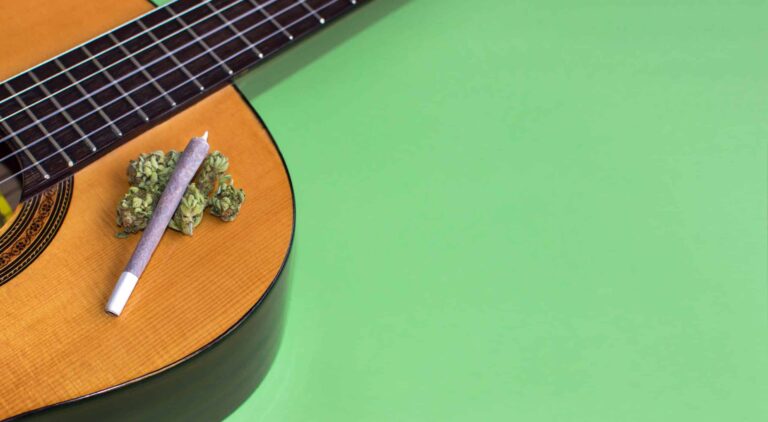The idea that cannabis spurs creativity is a long-held belief that many users swear by. “I smoke a lot of pot when I write songs,” says Lady Gaga, and Steve Jobs said that weed makes him more “relaxed and creative.” They join a long list of famous names that includes writers, musicians, artists and innovators who tout the creative might of marijuana. Are they on to something? Are the links between cannabis and creativity real? A new study explored this question.
What is Creativity?
In general, it involves the ability to develop new ideas or come up with novel ways to use objects or information. What constitutes a new idea or a novel way to utilize something varies widely, from large-scale inventions that change the world to finding the right word for a poem. Due to the difficulty of defining creativity in a more concise way, it’s an extremely challenging concept to study.
That said, the two primary components of creativity are: 1. Originality: the idea stands alone and is not just an extension of something else. 2. Functionality: the idea should be useful.
The personality trait “openness” is closely correlated with creativity. We typically associate creativity with people who have a variety of interests and/or look at the world in a way that offers fresh perspective. These types of people can offer new insights, make new discoveries or produce works of art, be it a building, song or podcast that shakes up culture by answering a question or a need, or adding a layer of beauty.
We appreciate you joining us. Sign up for the Cannadelics Weekly Newsletter to get updates direct to your email; and for sweet offers on cannabis flowers, vapes, edibles, smoking equipment, cannabinoid compounds, and even some psychedelics. Everyone get stoned responsibly!
However, the ability to be creative doesn’t just apply to the arts. In all fields, from pharmacology and physics to law and politics, an element of creativity is demanded to usher in new ways of thinking that ultimately impacts culture, determining how we live, what we believe, what we value. So, creativity plays a crucial role in society in terms of progress as well as how we interact with the world.
Divergent V Convergent Thinking
Creativity activates two different kinds of thinking in the mind, known as divergent thinking and convergent thinking. Convergent thinking relates to taking loose ideas and finding a common thread or organizing the ideas into a framework to get a specific outcome. The characteristics of this type of thinking include speed, accuracy and logic.
In convergent thinking, everything is black and white, and there’s no room for ambiguity. Convergent thinking is used in a variety of tests such as multiple choice, standardized tests, quizzes, crosswords, and similar set ups because only one answer is correct. By contrast, divergent thinking is more like brainstorming, taking an idea and exploring it in different ways to find the best outcome. As a result, this type of thinking is more spontaneous, free flowing and non-linear.
Divergent thinking means seeking out a new solution to an existing problem, and gets its name from the notion that there are limitless solutions to any given problem. In a creative environment, these two types of thinking tend to work together, beginning with divergent thinking in order to generate a number of possible solutions for a given problem. Once there are enough options available, convergent thinking can be applied in order to select the best option.
On top, multiple studies show the link between divergent and convergent thinking, and dopamine levels. When dopamine levels are high, people tend to be more creative and have a capacity for divergent thinking. But when dopamine levels are too low or too high, it reduces this capacity. Convergent thinking is more likely when dopamine levels are low. The different neural activity in the brain during creativity illustrates that it’s a process rather than an event.
Inspired by Mary Jane? A study on cannabis and creativity
On a recent podcast, Dr. Huberman discussed the links between cannabis and creativity, highlighting the studies that do show a positive correlation, meaning cannabis does increase creativity. He attributes this to the ability of cannabis to increase dopamine in certain brain areas, in particular areas involved in planning and thinking, which increases divergent thinking, thereby increasing creativity.
However, he notes that there are as many studies that suggest cannabis does not increase creativity but does increase the ability to consider multiple ideas, perhaps as a result of elevated dopamine. What this means is that the ideas that are produced are not truly creative in terms of the definition mentioned above i.e. the ideas are not original and/or functional. He cites a 2017 study called, “Inspired by Mary Jane? Mechanisms underlying enhanced creativity in cannabis users.”
This study took an unusual approach insofar as they did not evaluate the creativity of users while under the influence of cannabis, but instead looked at levels of creativity when not high, and asked whether the ability of users to be creative was enhanced in general by cannabis? They found evidence for enhanced creativity, which was significantly greater than in non-users. The study found that cannabis users in general, even if they’re not under the influence of cannabis, are far more open to novel idea and have reduced anxiety around novel ideas.

The study also identified a higher capacity for divergent and convergent type thinking in cannabis users, and attributed it to a higher level of openness amongst the group. So rather than being more creative per se, cannabis users display a higher degree of openness, which makes them receptive to new ideas. The study found the link between cannabis and creativity to be a “spurious correlation,” instead driven by “differences in personality.” In other words, people who use cannabis are more likely to be open to new ideas, which is the personality trait linked with creativity.
Under the Influence: The links between cannabis and creativity
A new study published in 2022 looked at the creative results of cannabis users while under the influence of cannabis. The researchers conducted two studies with more than 300 participants, recruiting cannabis users who used cannabis more than twice a week. They then asked the participants to carry out creative tasks at home, using whatever form of cannabis was their preference. In the first study, participants were asked to list as many uses as possible for a brick.
The second study asked participants to imagine that they worked for a consulting firm, and had to come up with a campaign to help a local music band increase revenue. The participants in the study were invited to assess the suggestions along with a panel of external judges. The researchers noted that the main distinction of participants who were high is that these people were simply “happier” and in a “better mood.”
However, when external judges judged the suggestions, they found that there was no difference between the quality of ideas put forward by high participants compared to sober participants. The researchers concluded that cannabis didn’t boost the creativity of high participants but it did improve their mood, increasing “joviality,” which prompted them to think their own ideas, and those of others were far more interesting than they actually were.
Researchers pointed out that “joviality” is in fact associated with higher creativity. But the participants in this study weren’t particularly more creative, just more enamored with the results of their creative efforts. In short, they conclude, when a person is high all ideas seem wonderful. In a workplace environment, where people may need to be more judicious, this may prove a disadvantage.
FINAL THOUGHTS
As with everything related to cannabis, more studies are needed to offer more definitive answers on the links between cannabis and creativity. So far, what we know is that cannabis users tend to be more open, and tend to be happier, which enables them to enjoy creative tasks. What we also know is that millions of cannabis users use cannabis specifically for the purpose of improving workflow. It’s likely that newer studies need to take more factors into consideration such as environment, familiarity with task, challenge of task and individual personality traits in order to reveal the links between cannabis and creativity.
Hello readers! We appreciate you stopping by Cannadelics.com; an independent news platform that specializes in cannabis and psychedelics reporting. Stop by regularly to stay informed on all happenings, and subscribe to the Cannadelics Weekly Newsletter, to ensure you’re never late to get the news.
